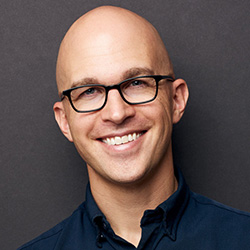Master the Art of Business
A world-class business education in a single volume. Learn the universal principles behind every successful business, then use these ideas to make more money, get more done, and have more fun in your life and work.
What Are 'Core Human Drives'?
There are five Core Human Drives that influence human behavior:
- Drive to Acquire: the desire to collect material and immaterial things, like a car, or influence.
- Drive to Bond: the desire to be loved and feel valued in our relationships with others.
- Drive to Learn: the desire to satisfy our curiosity.
- Drive to Defend: the desire to protect ourselves, our loved ones and our property.
- Drive to Feel: the desire for emotional experiences like pleasure or excitement.
Whenever a group of people have an unmet drive, a market will form to satisfy it.
The more drives your offer connects with, and the better you communicate those connections, the more attractive your offer will become.
Josh Kaufman Explains 'Core Human Drives'
If you’re going to build a successful business, it’s useful to have a basic understanding of what people want.
The most well-known general theory of what people want is “Maslow’s Hierarchy of Needs,” which was proposed by the psychologist Abraham Maslow in 1943. Maslow’s theory was that people progress through five general stages in the pursuit of what they want: physiology, safety, belongingness/love, esteem, and self-actualization. Physiology represents the “lowest” level of human need, while self-actualization (the exploration of a person’s innate potential) is the “highest.”
In Maslow’s hierarchy, each lower-level need must be met before a person can focus on higher-order needs. If you don’t have enough food, or you’re in physical danger, you’re probably not paying too much attention to how much other people like you, or how much personal growth you’re experiencing.
In practice, I prefer Clayton Alderfer’s version of Maslow’s hierarchy, which he called “ERG” theory: people seek Existence, Relatedness, and Growth, in that order.
When people have what they need to survive, they move on to making friends and finding mates. When they’re satisfied with their relationships, they focus on doing things they enjoy and improving their skills in things that interest them. First Existence, then Relatedness, then Growth.
ERG theory explains the general priority of human desires, but not the methods people use to satisfy them. For that, we must turn to other theories of human action.
According to Harvard Business School professors Paul Lawrence and Nitin Nohria, the authors of Driven: How Human Nature Shapes Our Choices, all human beings have four Core Human Drives that have a profound influence on our decisions and actions:
- The Drive to Acquire. The desire to obtain or collect physical objects, as well as immaterial qualities like status, power, and influence. Businesses built on the drive to acquire include retailers, investment brokerages, and political consulting companies. Companies that promise to make us wealthy, famous, influential, or powerful connect to this drive.
- The Drive to Bond. The desire to feel valued and loved by forming relationships with others, either platonic or romantic. Businesses built on the drive to bond include restaurants, conferences, and dating services. Companies that promise to make us attractive, well-liked, or highly regarded connect to this drive.
- The Drive to Learn. The desire to satisfy our curiosity. Businesses built on the drive to learn include academic programs, book publishers, and training workshops. Companies that promise to make us more knowledgeable or competent connect to this drive.
- The Drive to Defend. The desire to protect ourselves, our loved ones, and our property. Businesses built on the drive to defend include home alarm systems, insurance products, martial arts training, and legal services. Companies that promise to keep us safe, eliminate a problem, or prevent bad things from happening connect to this drive.
There’s a fifth core drive that Lawrence and Nohria missed:
- The Drive to Feel. The desire for new sensory stimulus, intense emotional experiences, pleasure, excitement, entertainment, and anticipation. Businesses built on the drive to feel include restaurants, movies, games, concerts, and sporting events. Offers that promise to give us pleasure, thrill us, or give us something to look forward to connect with this drive.
Whenever a group of people have an unmet need in one or more of these areas, a market will form to satisfy that need. As a result, the more drives your offer connects with, the more attractive it will be to your potential market.
At the core, all successful businesses sell some combination of money, status, power, love, knowledge, protection, pleasure, and excitement. The more clearly you articulate how your product satisfies one or more of these drives, the more attractive your offer will become.
Questions About 'Core Human Drives'
- What core human drives does your offer connect with?
- How can you potentially connect it with other drives?
"Understanding human needs is half the job of meeting them."
Adlai Stevenson, politician and former governor of Illinois
Value Creation
https://personalmba.com/core-human-drives/
Master the Art of Business
A world-class business education in a single volume. Learn the universal principles behind every successful business, then use these ideas to make more money, get more done, and have more fun in your life and work.

